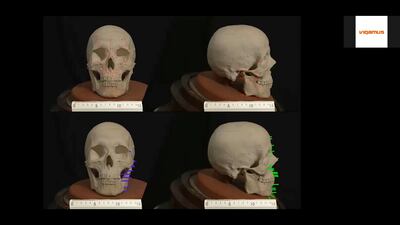In a time before plastic surgery and Facetune, it seems Renaissance artist Raphael found his own way of altering his appearance – by painting himself in an idealised way.
Scientists from the University of Rome believe that the artist altered the size of his nose in his famed self-portrait from the 16th century. “He certainly made his nose look more refined,” Mattia Falconi, a professor of molecular biologist at the university, said to Reuters. “His nose was, let's say, slightly more prominent.”
The scientists arrived at their conclusion by producing a 3D computer reconstruction of Raphael’s face that was based on a plaster cast of his skull from 1833. It is a process also used by forensic anthropologists and crime investigators, wherein the face is reconstructed through tissue layering techniques.
Falconi believes that there is an 85 per cent chance that the model of the skull does indeed belong to the painter, as the reconstruction bears similarity to how his contemporaries have depicted him. Specifically, the result appeared to be similar to an engraving of the artist by Marcantonio Raimondi, one of Raphael’s students.
It is also similar to the subject in Portrait of a Man, a work by Raphael's contemporary and rival Sebastiano del Piombo, who created the painting between 1512 and 1515.
The reconstruction shows Raphael in his older years, with a beard and larger nose than the one in his self-portrait, which was made between 1504 to 1506, 15 years before his passing. The painting contains warm, deep tones, with only Raphael’s face rendered with a soft light, accentuating his features.
Not everyone was pleased with Falconi's research. An art critic for the Rome newspaper La Repubblica called the university team's reconstruction as a cheap "video game version" of Raphael.
The Renaissance painter, whose cause of death has recently been clarified, died at the age of 37 in Rome. Last month, historians at the University of Milan Bicocca published a journal that described how an incorrect diagnosis and the ancient practice of bloodletting may have cost Raphael his life.
The study described the commonly-held assumption that Raphael died because of the sexually transmitted disease syphilis as a “myth”. Other presumed causes, such as typhoid and malaria, were deemed invalid as well.
Raphael’s self-portrait typically hangs in the Uffizi gallery in Florence, but is currently in Rome for an exhibition marking the artist’s 500th death anniversary.
His remains are buried in Rome’s Pantheon.






